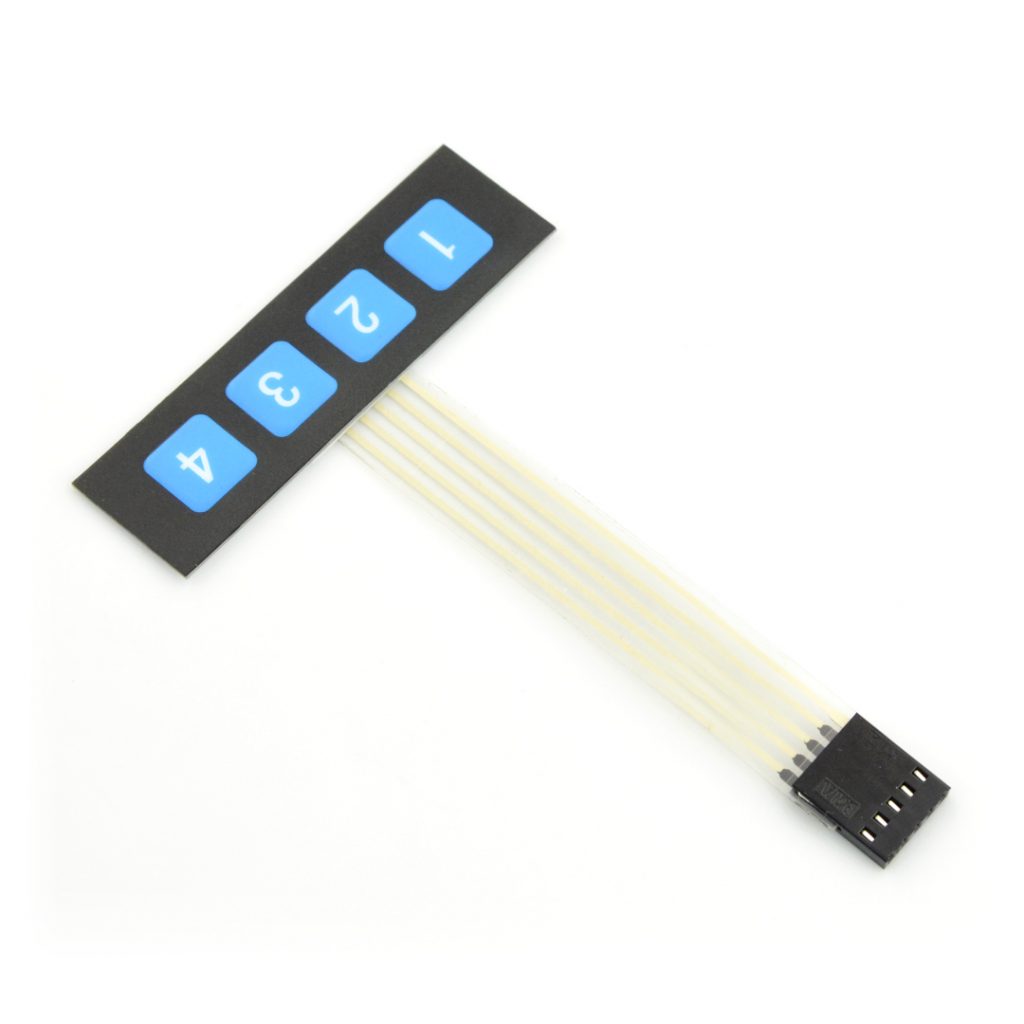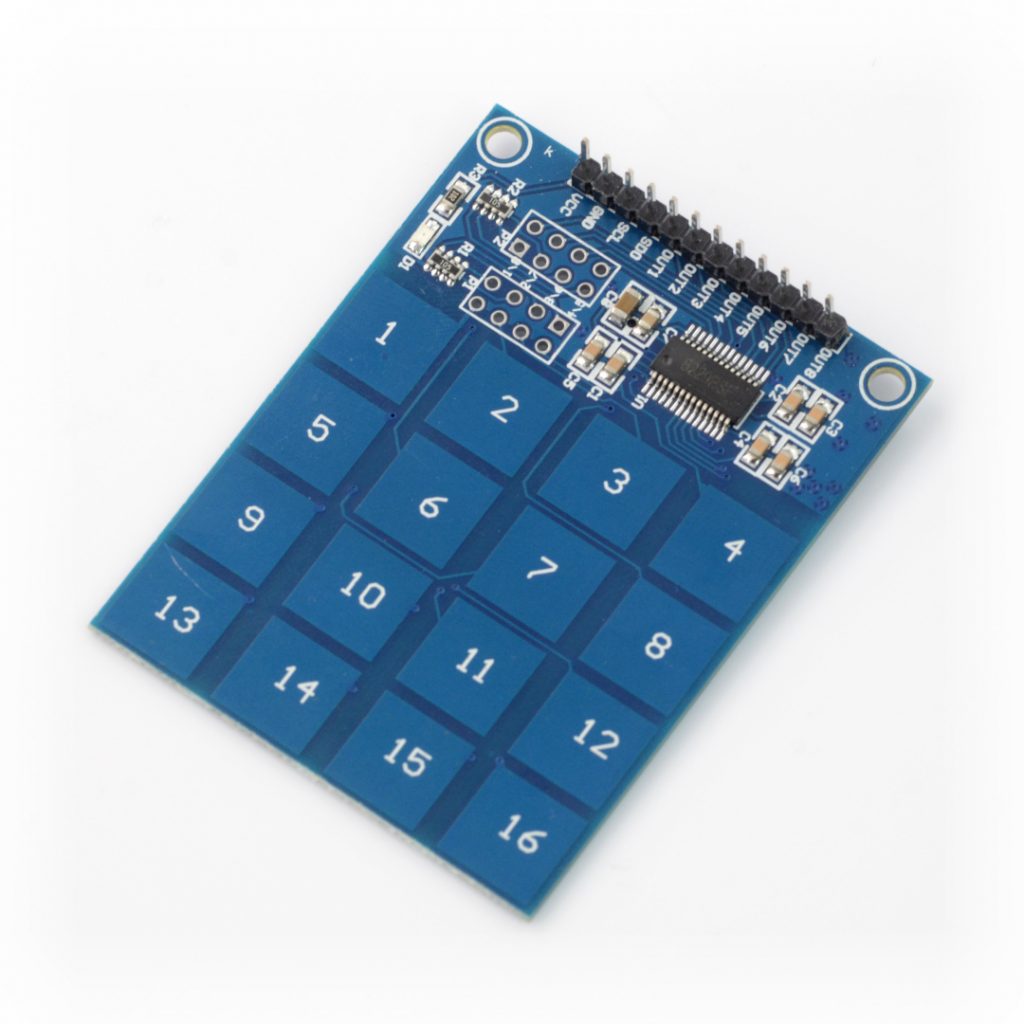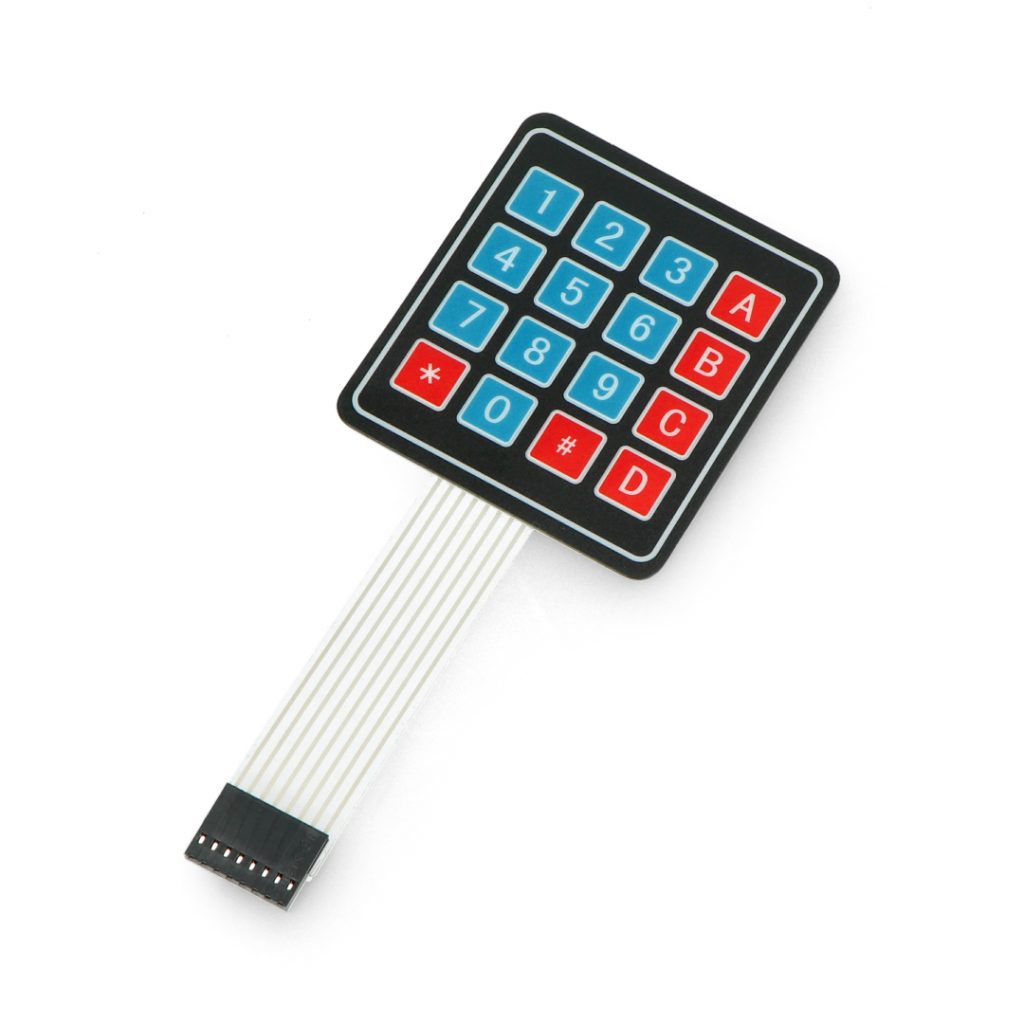Table of Contents:
Membrane keyboards are one of the most common forms of user interface in industrial and measurement devices, household appliances, consumer electronics, and many other branches of electronics. Simple implementation, excellent resistance to environmental conditions and possibility of almost any shape of graphic form make keyboards of this type being perfect even in new constructions – despite constantly growing popularity of touch screens.
In our article, we take a look at the construction and ways of connecting membrane keyboards, and we will also draw your attention to the difference between a membrane keyboard and the mechanical one.
How is a membrane keyboard built and how does it work?
The working principle of a membrane keyboard is based on the short-circuiting of conductive paths under the pressure of the user’s finger, usually made in the form of a print on a special film. The short-circuiting can be done either by a direct contact between two tracks, which are close to each other on two membranes separated by a perforated septum, or by using an external element, which, after pressing a key, connects two parts of a contact field, made in a form of overlapping “combs” – in this case both tracks leading to a particular key must of course be made on the same foil layer.
What is important, all elements of a classic membrane keyboard are permanently connected with each other in the process of laminating, i.e. both foils with tracks and perforated spacers, foils covering the whole (equipped with graphic print), and the keyboard base with a self-adhesive layer. Thanks to this treatment, the finished keyboard is a single element, resistant not only to moisture, dust and temperature, but also to mechanical damage.
Mechanical vs membrane keyboards – similarities and differences
The membrane keyboard is a kind of “variation of the mechanical keyboard”. – although the general principle of operation, consisting of a mechanical short-circuiting of two proximal contacts, is retained in both cases, there are several important differences between the above varieties of keyboards.

One of the most important ones is the production method – while almost every mechanical or membrane keyboard is made as a subassembly ready to be installed in the target device, classic mechanical keyboards are based on connecting a few, a dozen or even several dozen discrete buttons. In the case of membrane keyboards, on the other hand, the whole process from start to finish is based on combining layers, common for all contact fields – so all keys are created simultaneously and are inseparably connected with each other.
A construction based on laminating several layers of film also means that the resultant thickness of a membrane keyboard usually doesn’t exceed 1 mm, or sometimes 2 mm – while mechanical keyboards are usually at least a several times thicker. The mechanical life of membrane keyboards – measured by the guaranteed number of presses that do not yet lead to irreversible damage – is also usually much greater than that of their mechanical counterparts.
Membrane keyboards types
The simplest membrane keyboards consist of simple keys with a flat or convex front, made in the form of a so-called embossing. If you want to feel the “click” effect when pressing a key, you can choose a version with built-in domes made of thin, properly shaped spring sheet metal, sunk inside the keyboard.
In some cases, keyboards can be supplied with a flexible silicone cover, shaped to suit the design of the case and the location of the keys. It is worth adding that customised keyboards – made on request – may have in-built controls in the form of LED diodes, which allows avoiding making additional holes in the casing.
However, the production costs of dedicated keyboards turn out to be very high and usually make it completely impossible to use a keyboard of your own design in devices manufactured as a unit, prototypes, and even more so in amateur constructions. In such situations, it is worth to reach for ready-made, universal membrane keyboard – there are various models available on the market, equipped with several, a dozen or even more than twenty most often used keys.
How useful was this post?
Click on a star to rate it!
Average rating 0 / 5. Vote count: 0
No votes so far! Be the first to rate this post.






















